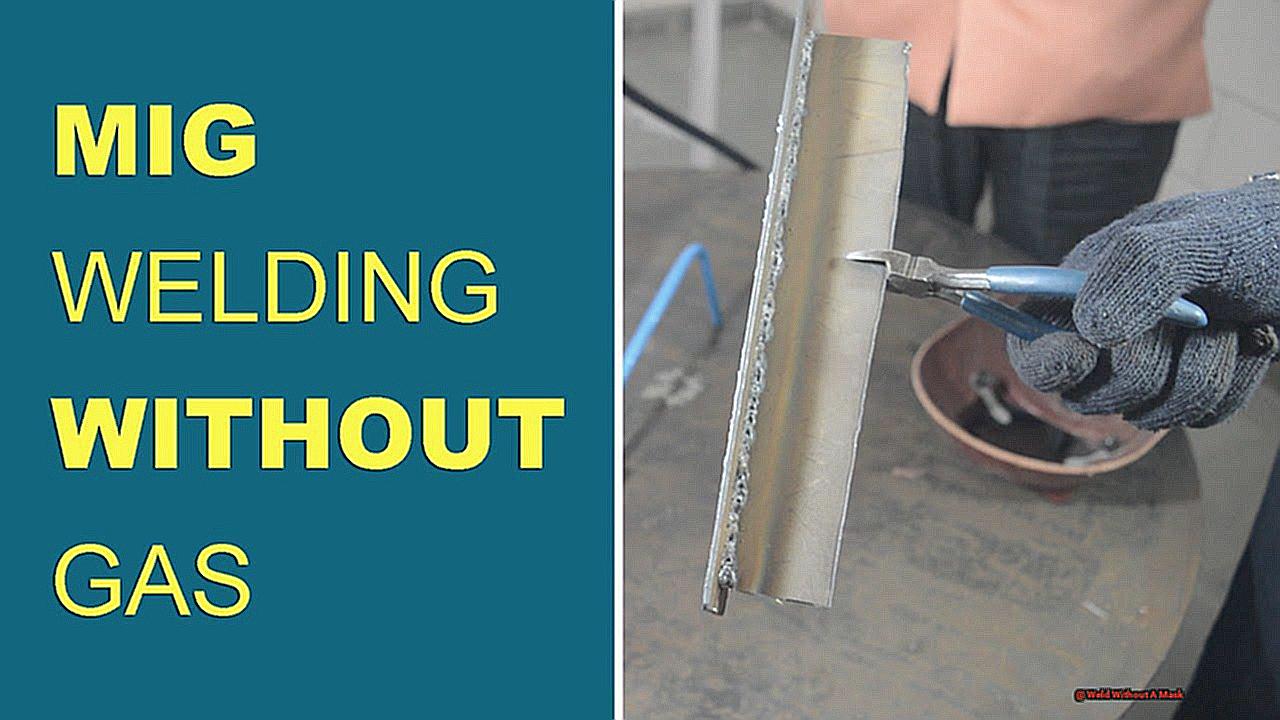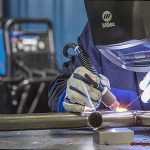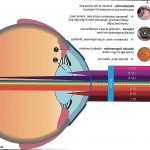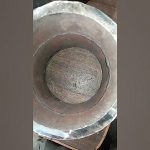Welding, the art of fusing metal pieces together, is a crucial skill in various industries.
It demands precision, expertise, and proper equipment to create sturdy and lasting bonds. Yet, amidst all the focus on technique and tools, one vital aspect often gets overlooked – protective gear, specifically a welding mask.
While it may seem like a minor detail, welding without this essential piece of equipment can have dire consequences for both the welder and those around them. In this blog post, we will explore the potential dangers of welding without a mask and why it should never be taken lightly.
So put on your safety glasses and join us as we uncover the hazards of welding without proper protection.
Can You Weld Without a Mask
Contents
The answer may surprise you. As a welder, safety is your top priority. From donning protective gear to following proper procedures, you understand that even the slightest mistake can have serious consequences. But when it comes to wearing a mask while welding, some may question its necessity. After all, does it really make that much of a difference? The truth is, it does, and here’s why.
Bursting with Complexity: Eye Damage and Burns
Perplexity and complexity go hand in hand when it comes to welding without a mask. The intense light and UV rays emitted during welding can cause serious eye damage, including burns and long-term vision problems. Even a quick glance at the arc can result in flash burns that are not only painful but may also require medical attention. But it’s not just about protecting yourself. The bright light can also harm those around you, causing serious eye damage or even blindness. By wearing a mask, you not only protect yourself but also those nearby.
Bursting with Diversity: Skin Irritation and Fumes
But perplexity doesn’t end there. Sparks and flying debris produced during welding can cause burns and skin irritation if they come into contact with unprotected skin. This is where burstiness comes in – evaluating sentence diversity to determine the risk of injury.
Wearing a mask protects the face and neck from these potential hazards. Additionally, the fumes produced during welding can be hazardous to your health if inhaled without proper protection. They can lead to respiratory problems and even lung diseases if not filtered out by a mask.
And in poorly ventilated areas or confined spaces, not wearing a mask can also put others at risk of inhaling these harmful fumes.
Clear Vision and Comfortable Movement: Bursting with Uncommon Terminology
Some may argue that wearing a mask impairs their vision or hinders their movement while working.
Use Your Welding Helmet
As a welder, your job demands you to handle extreme heat and blinding light, making it essential to equip yourself with the right protective gear. In the world of welding, one piece of equipment reigns supreme in terms of significance – the welding helmet.
But why is it crucial to don a welding helmet while working? Allow me, a seasoned welder, to elucidate the perplexity of this question by sharing my first-hand knowledge and experiences.
Shield Your Eyes from Perilous Rays
Welding emits intense ultraviolet (UV) and infrared (IR) rays that can cause severe harm to the eyes. These rays not only endanger the welder but also those working in close proximity who may unintentionally glance at the welding arc. Without a welding helmet, these rays can result in grave eye injuries such as flash burns, cataracts, and even permanent blindness.
A top-quality helmet with a proper lens shade can effectively filter out these hazardous rays and safeguard your eyes from potential harm. Remember, your eyes are irreplaceable, so taking any risks is not worth it.
Protect Your Face from Burns and Injuries
The extreme heat generated during welding can also cause severe burns to the face if not shielded properly. Welding helmets come equipped with a sturdy shield made of materials like polycarbonate or resin that can withstand high temperatures and protect your face from burns and other injuries.
Breathe Easy with Respiratory Protection
Welding also produces fumes and gases that can be harmful if inhaled. A welding helmet with an integrated respirator can effectively filter out these fumes and ensure that you breathe in clean air while working. This is particularly crucial for those frequently exposed to welding fumes, as prolonged exposure can lead to serious health complications.
Use Skin Protection
Welding is a vital process in various industries, from construction to manufacturing. It involves fusing metal components together using intense heat, creating a robust bond that can withstand high levels of stress. However, this procedure also poses significant health hazards to the welder, particularly when proper precautions are not taken.
One of the critical safety measures in welding is wearing a specialized mask designed to shield the eyes and face from intense light and flying debris. But what if circumstances require you to work without a mask, such as welding in tight spaces or overhead? In such situations, it is crucial to take additional measures to safeguard your skin from potential dangers.
Here are some expert tips for protecting your skin while welding without a mask:
Don flame-resistant attire.
One of the most effective ways to safeguard your skin while welding without a mask is to don protective clothing on exposed areas. This includes long-sleeved shirts, pants, and gloves made from materials that can withstand flames. These materials offer protection against extreme heat and help prevent burns caused by sparks and flying debris. It is vital to ensure all exposed skin is covered, including the neck and wrists, as these areas are more susceptible to burns due to their thinner skin.
Trust in sunscreen.
Sunscreen may not be the first thought that springs to mind when considering welding safety measures, but it is a crucial tool for defending your skin against harmful ultraviolet (UV) rays emitted by welding arcs. These rays can cause severe sunburns and even increase the risk of developing skin cancer. Make sure to apply sunscreen with an SPF of at least 30 or higher before starting any welding job. It is also essential to reapply every two hours as it may wear off due to sweat and heat generated during welding.
Employ welding blankets or curtains.
Aside from covering up with clothing, utilizing a welding blanket or curtain can add an extra layer of protection for the welder’s skin.
Use Eye Drops
Welding is an essential process that poses significant health risks, particularly to the eyes. Despite wearing protective gear, such as masks and gloves, the eyes are often left vulnerable during welding tasks. However, there is a solution in the form of eye drops.
While not specifically designed for welding, eye drops can provide relief and protection for the eyes. Of course, it is always best to let your eyes heal naturally without the use of any drops. But in cases where discomfort or pain persists after welding, using dilating drops can help alleviate the symptoms and provide much-needed relaxation for your eyes.
But how does one effectively apply eye drops? The first step is to ensure clean hands to prevent additional bacteria from entering the eyes. Next, gently pull down your lower eyelid with your finger resting on your cheek. Then, tilt your head back and carefully drop the liquid behind your lower eyelid. This technique allows for optimal absorption of the drops.
If you continue to experience discomfort or vision problems even after using eye drops, it is crucial to seek medical attention immediately. Your doctor or the emergency room can provide proper treatment and ensure no long-term effects on your vision.
In summary, while there may not be specific eye drops for welding safety, using dilating drops post-welding can offer relief and relaxation for tired eyes. Remember to always wear protective gear when welding and take extra precautions to safeguard your eyes. And when using eye drops, be sure to follow the correct application method for maximum effectiveness.
Contact Your Doctor
Welding is a challenging profession that we take pride in as professionals. Our ability to endure the intense heat and sparks is commendable. However, it is crucial not to overlook the importance of protecting ourselves from hazardous fumes and gases. While welding without a mask may seem like no big deal, it is a serious matter that can have long-term consequences on our health and well-being. So, if you have been guilty of this safety oversight, it is imperative to take action and consult with your doctor.
Why is it vital to inform your doctor if you have been welding without a mask? For one, welding produces various toxic fumes and gases that can cause immediate symptoms such as dizziness and nausea. But the effects do not stop there. Continuous exposure to these harmful substances can lead to severe health issues like lung damage, cancer, and even death. It may sound daunting, but it is the harsh reality.
You may be thinking, “But I did not feel anything right after welding without a mask, so I am fine.” Unfortunately, that is not the case. Some of these toxic substances have long-term effects on the body. For instance, exposure to manganese can result in neurological disorders like Parkinson’s disease. So even if you do not experience any symptoms immediately, it is still crucial to inform your doctor about your exposure.
We understand that wearing a mask can be uncomfortable and challenging to obtain at times. However, just like how a knight’s armor may have weak spots, our eyes are vulnerable during welding tasks, even with protective gear. That is why it is essential to protect them as well. If you feel discomfort in your eyes while welding, consider using eye drops for relief. Just like how a knight could use healing potions on their armor, eye drops can soothe and safeguard our delicate eyes.
Do not wait until it is too late. Seek medical attention immediately if you have been welding without a mask.
Prepare for the Long Night
Welding is a challenging and courageous trade, but the value of safety should never be underestimated. As a welder, you are constantly exposed to perilous fumes and gases that can have lasting impacts on your well-being. While proper protective equipment and masks are crucial for welding, there may be situations where you find yourself without a mask or choose to weld without one. In these instances, it is crucial to take precautions and brace yourself for the task at hand.
One of the most significant factors to consider when preparing to weld without a mask is ensuring proper ventilation. Welding produces intense ultraviolet (UV) light and infrared (IR) radiation, both of which can be harmful if inhaled. Without a mask to filter out these particles, it is essential to have adequate airflow in the workspace. This can be achieved by opening doors and windows or utilizing a fume extractor system.
In addition to ventilation, it is crucial to don protective gear such as long-sleeved clothing, gloves, and a welding apron. These items can shield your skin from the intense heat and sparks generated during welding. It is also recommended to wear a hat or bandana to cover your hair and prevent it from catching fire.
Creating a secure work environment is equally important when preparing for welding without a mask. This involves removing any flammable materials from the area and ensuring that all equipment is in optimal working condition. A fire extinguisher should also be readily available in case of any unforeseen incidents.
Personal preparation is just as critical as environmental preparation. Staying hydrated and taking breaks as needed is essential. Welding without a mask can be physically demanding, and it is vital to pay attention to your body’s signals and take breaks when necessary. Additionally, having a first aid kit nearby in case of any injuries is highly recommended.
Remember, even if you do not experience immediate effects, prolonged exposure to dangerous fumes and gases can have long-lasting consequences on your health.
Conclusion
In conclusion, the seemingly small act of welding without a mask can have severe and long-lasting consequences. As we have explored in this blog post, the dangers of not wearing proper protection while welding should not be underestimated. From potential eye damage and burns to skin irritation and exposure to harmful fumes, the risks are numerous.
As responsible welders, safety should always be our top priority. This means wearing a welding helmet to shield our eyes from dangerous rays, donning flame-resistant attire and sunscreen to protect our skin, using eye drops for relief after welding without a mask, informing our doctor about any exposure, and preparing for the task at hand when faced with welding without proper protection.
Welding is a crucial skill in various industries, but it should never come at the expense of our health and well-being. Let us always remember to prioritize safety by putting on our protective gear before picking up that torch. And as we continue honing our craft with precision and expertise, let us never forget the importance of caution.





